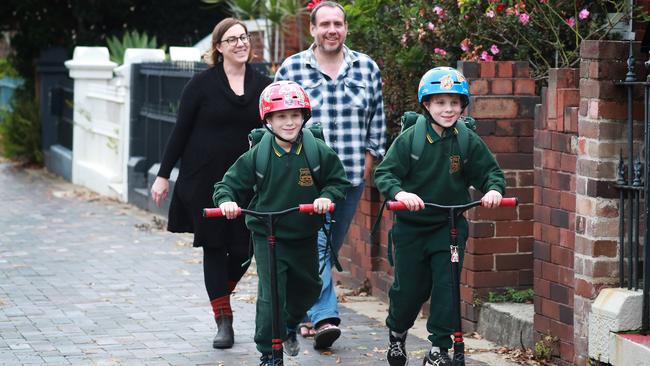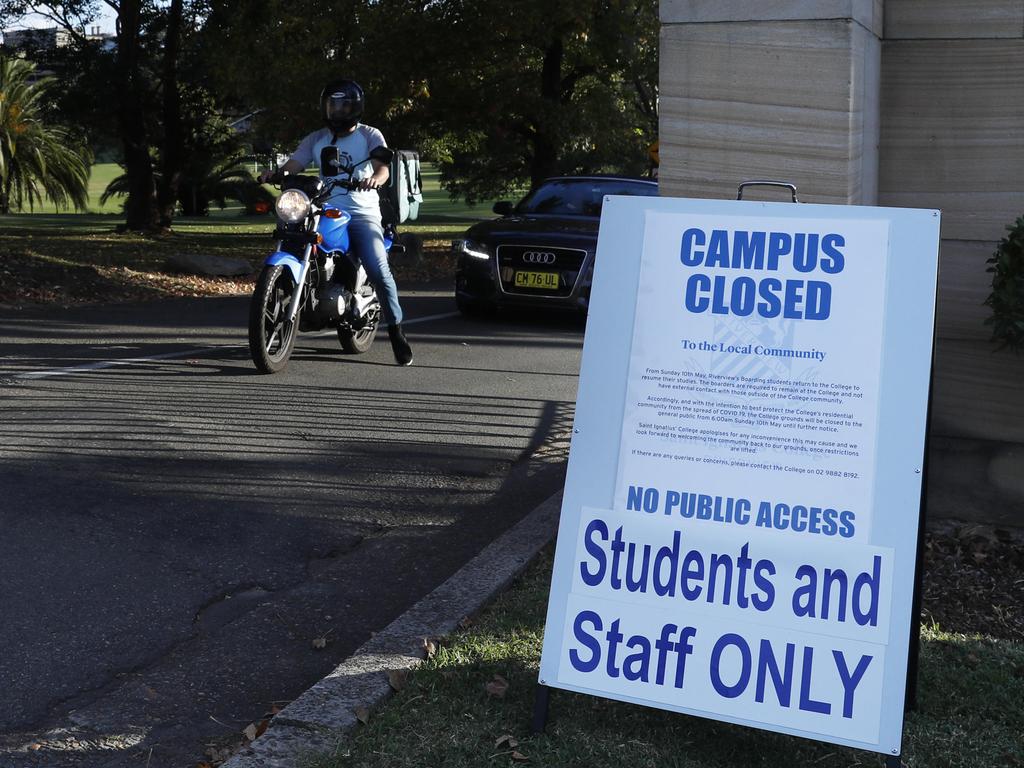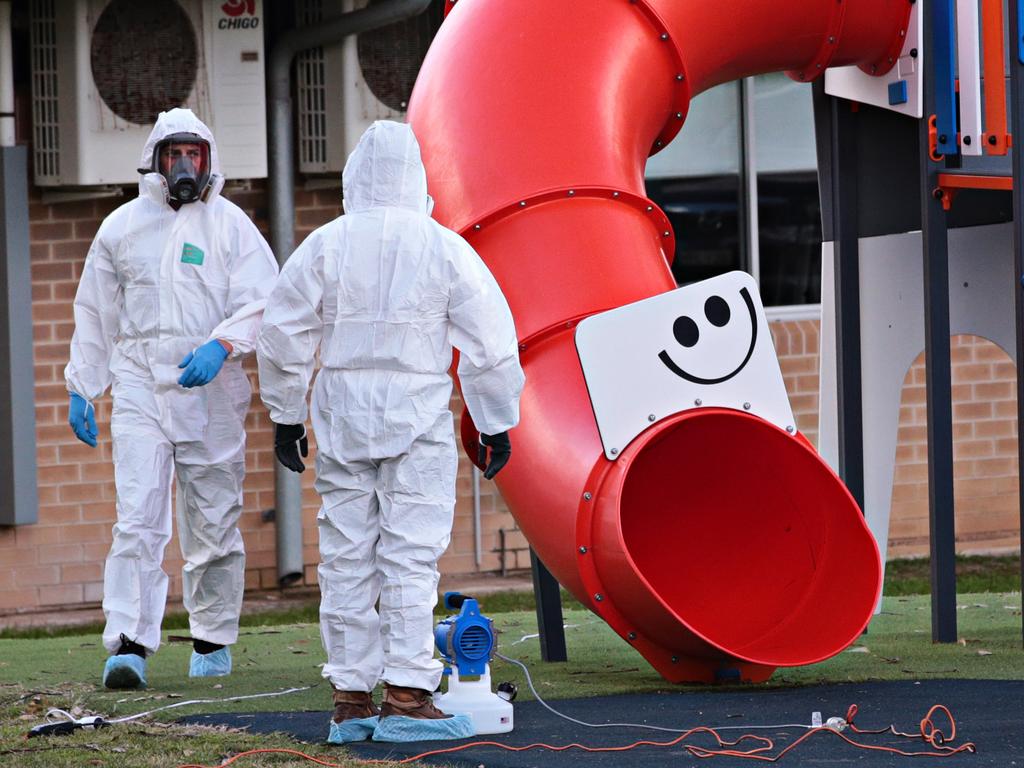Coronavirus: back to class, states urged as toll on learning revealed
Victoria and Tasmania have been urged to bring forward plans to reopen schools or risk further detriment to students’ learning.

Victoria and Tasmania have been urged to bring forward plans to reopen schools or risk further detriment to students’ learning, as more than two million schoolchildren in NSW and Queensland are set to return to class this week.
Schools across NSW and Queensland will welcome back students full-time for the first time this term on Monday, introducing safety and hygiene measures as well as restrictions on social gatherings in a bid to counter the potential spread of the coronavirus.
They join students from South Australia, Western Australia and the Northern Territory in resuming face-to-face lessons in the wake of extended school shutdowns across the nation.
Only students in Victoria, Tasmania and the ACT continue to learn from home, with staged returns by year level to result in having all students back on site in early June.
The extended closures — which will stretch to nine weeks in Victoria and eight in Tasmania and the ACT — come as a new report highlights the toll on students’ learning, particularly for disadvantaged students.
The Centre for Independent Studies report, titled Pain Without Gain: Why School Closures Are Bad Policy, claims that disadvantaged students in the three jurisdictions face “between two and three weeks of lost learning in numeracy” and “between one and two weeks of lost learning in reading”.
But in South Australia, where schools shut for just one week, disadvantaged students are likely to be only marginally affected, it says.
“These weeks of lost learning should be viewed in the context of Australian disadvantaged students already being about 37 weeks behind in numeracy and 35 weeks in reading, compared to the typical student,” the paper says.
“There will likely be a significant — but not necessarily irretrievable — negative effect of the extended school closures for disadvantaged students.
“It is important that these government school systems track students’ progress as they come back into school, to identify students who may have fallen behind in the key areas of literacy and numeracy, and intervene to ensure they catch up.”
According to the report’s authors, Blaise Joseph and Glenn Fahey, the decision to close schools “went against the health, economic, and educational evidence” and urged schools to completely reopen as soon as possible.
“The Victorian, Tasmanian, and ACT governments should consider fast-tracking their current timetables for going back to full-time face-to-face learning for all students,” they wrote.
Despite a significant decline in COVID-19 transmission rates — just six new cases were recorded nationwide on Sunday — reopening schools has not come without controversy and challenges.
Detailed guidelines sent to NSW schools to help prepare for reopening contain a detailed list of restrictions. While students are permitted to use playgrounds, libraries and play non-contact sport, assemblies, excursions and work experience have been ruled out. Non-essential visitors to school grounds, including parents, are banned.
The state government also urged parents to drive their children to school if possible, to avoid public transport crowding.
Meanwhile, the department has dispatched 166,000 litres of hand sanitiser, 138,500 litres of surface spray, 100,000 packets of disinfectant wipes and 60,000 rolls of toilet paper to schools ahead of the reopening.
Sydney parent Jodie Cutler said eight-year-old twins Sid and Gus were excited to return to school. “In the weeks where they have been going to school for one day, they’ve been dressed and ready for breakfast by 6.30am,” she said. “They couldn’t be more delighted.”
Ms Cutler said she felt somewhat apprehensive, given there was still much that was unknown about the virus. “But we feel the NSW government is listening to the right people and I do agree that sending our kids back to school seems to be the right decision at this time,” she said.
Education Minister Sarah Mitchell said the past few months had proven challenging for students and she was confident that teachers would be able to provide additional support to those in need.
“Our teachers are best placed to assess how students’ learning has progressed, and we have prepared a suite of new planning tools and strategies to help them do this when students return to the classroom,” Ms Mitchell said.
“We will continue to support our teachers and principals to close any gaps in student learning that may have arisen during the pandemic.”







To join the conversation, please log in. Don't have an account? Register
Join the conversation, you are commenting as Logout